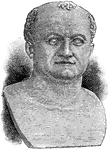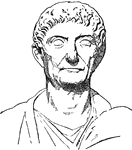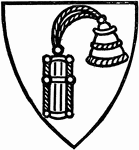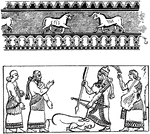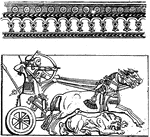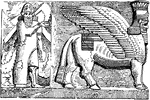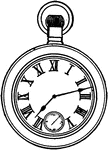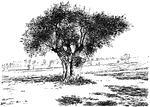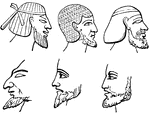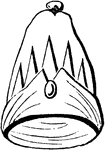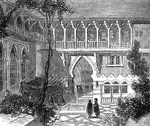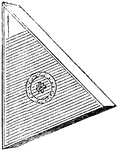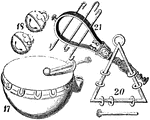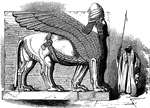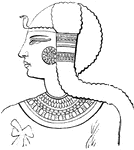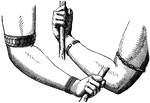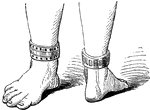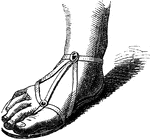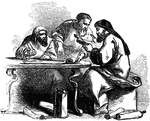
Prow of a Roman War Ship
"The representation shows the arrangement of the tiers or oars in a two-banked ship. In just what way…

Pompey the Great
Also known as Gnaeus Pompeius Magnus. He was a military and political leader of the late Roman Republic.
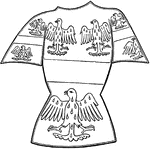
Tabard
A common item of men's clothing during the Middle Ages. It is a short coat with short sleeves or shoulder…
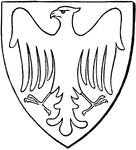
Eagle
The heraldic charge of the eagle is one of the earliest charges. It holds the same rank that the lion…
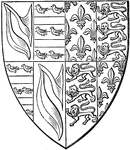
Shield of John de Hastings
"Shield of John de Hastings, K.G., Earl of Pembroke, Quatering De Hastings and De Valence, and impaling…
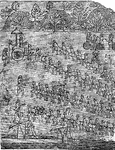
Winged Bull
An ancient Assyrian wall relief, depicting the symbol of a winged bull with the head of a human male.
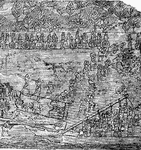
Assyrian Lion
A wall relief of the ancient Assyrian lion. These sculptures were placed in doorways as protective entities.

Fruiting Branch of Fig
Fig is a fruit producing tree. The cultivation of figs goes back to ancient times. It is native to the…

Artemisia Pontica
The common name of Artemisia pontica is Roman wormwood. The plant is shrubby and erect, growing between…
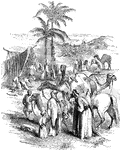
A Scene In Arabia
An illustration of an outdoor scene in ancient Arabia. Pictured are camels, shepherds, and others going…
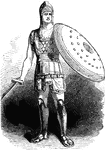
Arms and Armor
The image of a Roman legionnaire. He is equipped with a dense breastplate, a helm, a large round shield,…
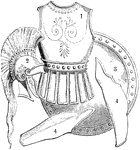
Arms and Armor
An array of miscellaneous ancient armors. The image depicts (1) a cuirass, often referred to as a coat…
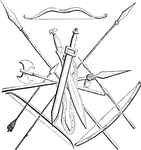
Arms and Armor: Weapons
An array of weapons used in ancient times (some of which are still used today). Among these weapons…

The Acropolis
An image of the Acropolis, as it was, seated in Athens, Greece. The Acropolis is an ancient, famed citadel…

Gonfanon
The gonfalon, gonfalone (from the early Italian confalone) is a type of heraldic flag or banner, often…

Gladiators
This illustration shows various types of gladiators, each type with with his specific weapons attributed…
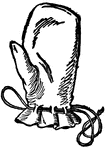
Early Glove
This illustration shows an early form of a glove, used to cover the hands. This glove was likely made…

Griffin
In heraldry, the griffin is a fabulous animal, with the head and forefeet of an eagle, and the body,…
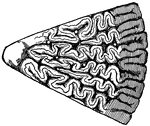
Section of Tooth of Typical Labyrinthodont
This illustration shows a section of a tooth of a typical Labyrinthodont. Labyrinthodont, or Stegocephali…
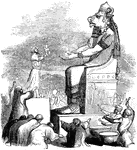
Moloch Being Worshipped
Moloch (or Mo'lech) is the name of an ancient deity which was worshipped by the Ammonites. The Israelites…
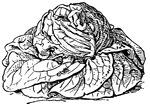
Cabbage Lettuce
Cabbage Lettuce is distinguished by its broad leaves and low spreading habit. It is an annual plant,…
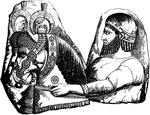
Warrior and horses
An engraving of a warrior and horses from the mound of Khorsabad, Nineveh. (Capital of ancient Assyria).

Nose ring
Israeli women would often wear rings not just on their wrists, but on their noses and ears and ankles.
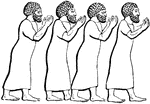
Sennacherib
Figures from the palace of Sennacherib, located in Kouyunjik, Nineveh (ancient Assyria).

